Jewellery - Sold antiquities
Archive of sold antiquities
All artefacts sold in our gallery are fully documented in our online archive and database. Being a specialist ancient art dealer, preserving also the more recent history of each and every piece sold in our shop is at our heart. That is particularly useful for artefacts that changed owners in the meantime. Information that may have been lost in the process can be easily restored from our archives. Please do not hesitate to contact us if you need further information about ancient items that have been sold in our gallery. We can help you with reconstructing the history of ownership for those items. All information about our customers will be kept confidential, of course.-
 Roman gold earring
Roman gold earringThe earring is skillfully garmented with granular gold beads. The craftsmanship and decorations are a typical example of jewellery in Roman times.
Price: on request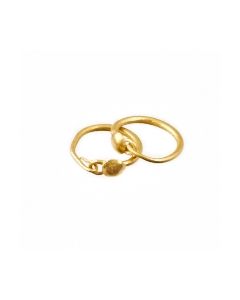 Elegant Roman gold earrings
Elegant Roman gold earringsThe pair of earrings is simple and elegant. The circular basic shape is only decorated by a shield. Dating to the 2nd cent. AD.
Price: on request Roman provincial fibula of the horsemen
Roman provincial fibula of the horsemenThe swastika shaped brooch with horse head terminals was worn by the cavallery in Late Antiquity. In particular by the troops recruited by the Romans from their Pannonian Foederati. It might have been a symbol for strength or designated a military rank.
Price: on request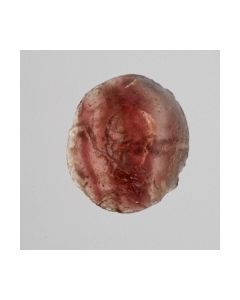 Roman intaglio with Eros as a child
Roman intaglio with Eros as a childThe god of love known from Greek Mythology is engraved in a beautiful violet glass.
Price: on request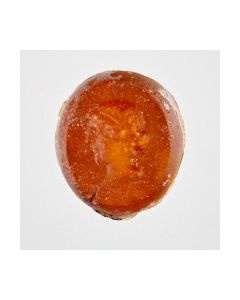 Ancient engraved gem with portrait of a Roman girl
Ancient engraved gem with portrait of a Roman girlBeautifully engraved gemstone made of dark orange glass. A nicely worked intaglio from Roman times.
Price: on request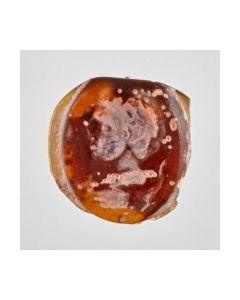 Roman Intaglio with male bust
Roman Intaglio with male bustThe glass paste shows a young man with petasos. Possibly a representation of the god Mercurius.
Price: on request Three ancient eye beads
Three ancient eye beadsThe group of rare ancient eye beads consists of glass beads with polychrome inlays.
Price: on request Three ancient eye beads
Three ancient eye beadsThe group of rare ancient eye beads consists of glass beads with polychrome inlays.
Price: on request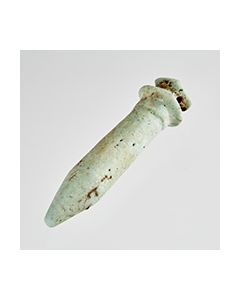 Egyptian papyrus scepter amulet
Egyptian papyrus scepter amuletPapyrus scepter made of faience. Late Period of Ancient Egypt. It symbolizes prosperity and youth. From the stock of a british private museum.
Price: on request Egyptian papyrus scepter amulet
Egyptian papyrus scepter amuletPapyrus scepter made of faience. Late Period of Ancient Egypt. It symbolizes prosperity and youth. From the stock of a british private museum.
Price: on request Graeco-Roman earrings
Graeco-Roman earringsThe pair of earrings is made of gold. The type is from Northern Africa and dates to Greek or Roman times.
Price: on request Graeco-Roman earrings
Graeco-Roman earringsThe decorated pair of earrings is made of gold sheet. It is hollow inside. The type is from Northern Africa and dates to Greek or Roman times.
Price: on request Nicely decorated Graeco-Roman gold earrings
Nicely decorated Graeco-Roman gold earringsThe pair of earrings is made of gold. Each piece is carrying a red insert piece. A nicely decorated piece of jewellery from North Africa in Graeco-Roman times. With Art Loss Certificate.
Price: on request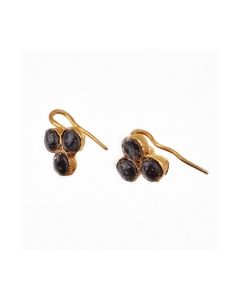 Roman gold earrings with inserts
Roman gold earrings with insertsThe matching pair of earrings is made of gold. Each piece is garneted by three dark insert pieces. A magnificent piece of jewellery from Roman times.
Price: on request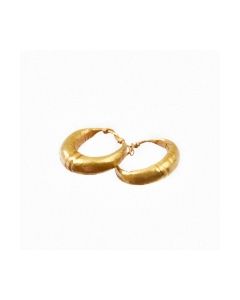 Graeco-Roman earrings
Graeco-Roman earringsThe decorated pair of earrings is made of gold sheet. It is hollow inside. The type is from Northern Africa and dates to Greek or Roman times.
Price: on request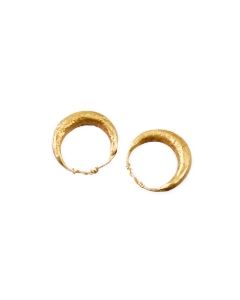 Graeco-Roman earrings
Graeco-Roman earringsThe pair of earrings is made of gold sheet. It is hollow inside. The type is from Northern Africa and dates to Greek or Roman times.
Price: on request Ram-headed pendant
Ram-headed pendantFinely polished stone shaped like a stylized ram head with spiral horns. Bronze Age amulet from the Middle East.
Price: on request Roman intaglio with Hermes
Roman intaglio with HermesThe engraved glass dates back to the Roman Republic. It shows the Greek god of the travel and trade. He is holding a purse and cloak in his hands.
Price: on request Pair of Roman gold earrings with cameos
Pair of Roman gold earrings with cameosMatching pair in magnificent preservation. With depiction of Medusa. Jewellery of a Roman lady in the early third century.
Price: on request Roman knee brooch
Roman knee broochPrime example of this important and popular type of brooch during the 2nd century.
Price: on request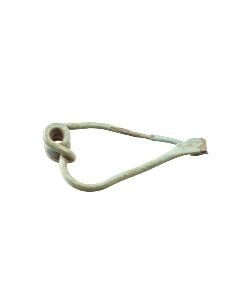 Early bow brooch of the Urnfield period
Early bow brooch of the Urnfield periodSimple fibula shape dating to the Late Bronze Age. Interesting mix of two-sided spiral spring and simple pin holder.
Price: on request Celtic fibula
Celtic fibulaRare fibula from the La Tène culture with beautiful enamel inlays. The main material is well preserved for an iron fibula.
Price: on request Gorgeous Roman Imperial fibula
Gorgeous Roman Imperial fibulaThe large bow is dominated by colourful enamel. It is a brooch type that developed during the 1st cent. AD in Central Europe.
Price: on request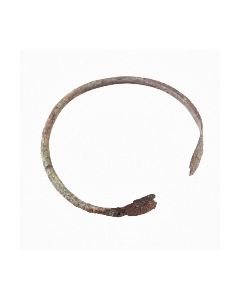 Byzantine bracelet with decorated terminals
Byzantine bracelet with decorated terminalsMassive bronze bracelet with circular profile. The terminals are made of nicely decorated plates.
Price: on request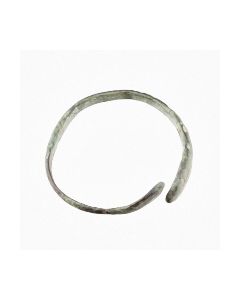 Roman bracelet with snake heads
Roman bracelet with snake headsMassive bronze bracelet dating to the 2nd or 3rd cent. AD. Snake shaped terminals.
Price: on request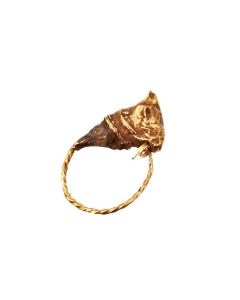 Hellenistic gold earring with bull
Hellenistic gold earring with bullElaborate earring with twisted band and plastic head of a bull. The piece dates to hellenistic times and was skillfully made of gold wire and sheet.
Price: on request Roman golden ring with intaglio
Roman golden ring with intaglioA marvelous piece of ancient jewelry in great condition. The jasper intaglio shows a standing archer. 1st to 2nd cent. AD.
Price: on request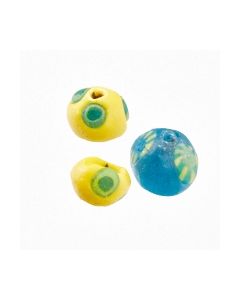 Three ancient eye beads
Three ancient eye beadsThe group of rare ancient eye beads consists of glass beads with polychrome inlays.
Price: on request Three Roman eye beads
Three Roman eye beadsGroup of beautiful miniature artworks made of mosaic glass. The beads are from early Roman Imperial times.
Price: on request Group of three green beads
Group of three green beadsVery nice specimen of biconical shape. The group features beautiful opaque glass with a spectrum of green in each bead.
Price: on request Rare frog fibula
Rare frog fibulaZoomorphic fibula dating to the Roman Principate. Very nice enameled work. Rare variant of this popular fibula type from Roman Gaul.
Price: on request Pair of earrings from Luristan
Pair of earrings from LuristanThe earrings date to the early Iron Age of Luristan. The type of jewellery is rare for this region.
Price: on request Pair of pins with chain
Pair of pins with chainThe pair of pins dates to the early Iron Age of Luristan. It is made from Bronze and Iron. This state of preservation is extremely rare for composite objects.
Price: on request Spoked disc brooch from Roman Britain
Spoked disc brooch from Roman BritainThis is an extremely rare variant native to Roman Britain. Hattatt mentions that only 13 specimen of this type are known to exist.
Price: on request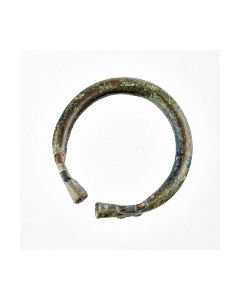 Bracelet from Luristan with animal terminals
Bracelet from Luristan with animal terminalsA high degree of abstraction for the animal heads and a wonderful blue patina make this piece a highlight for Iranian bronze works.
Price: on request Bracelet from Luristan with triangular terminals
Bracelet from Luristan with triangular terminalsThe bronze braclet is band shaped and has linear engravings on the outer side.
Price: on request

